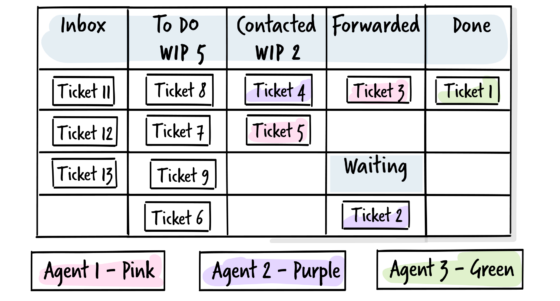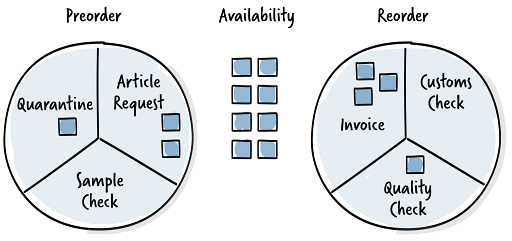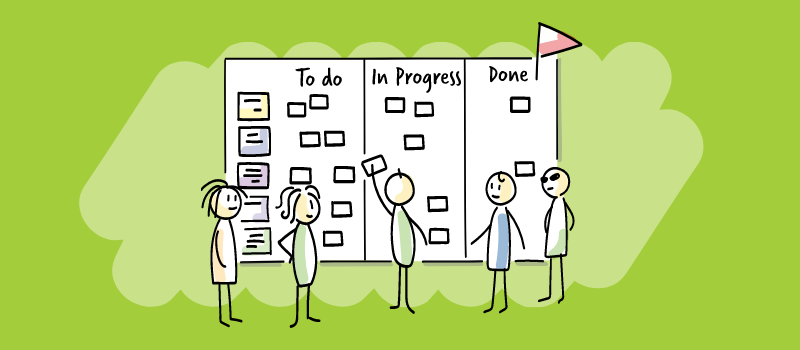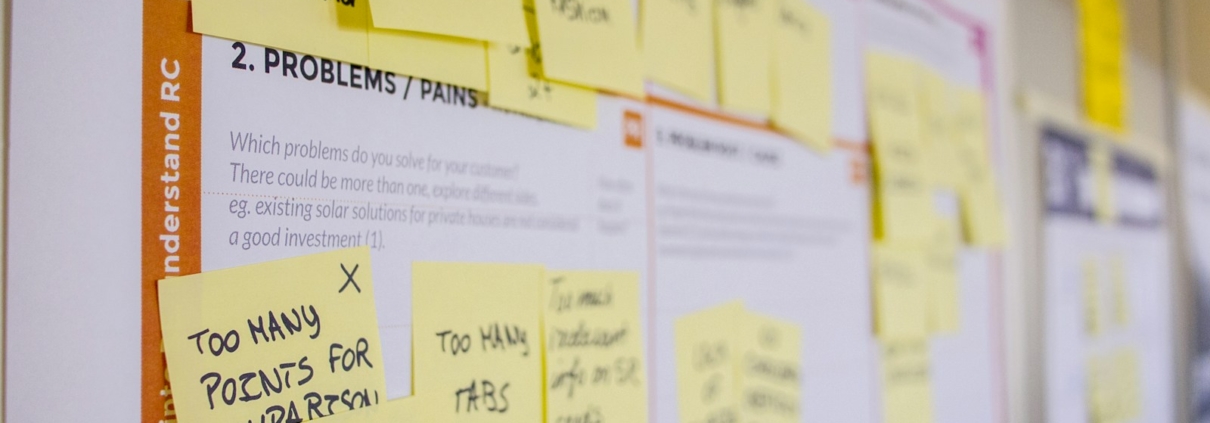How to Create a Kanban Board: A Practical Guide
/by Birge KahramanVisualization of your workflow is one of the primary practices of Kanban. A good Kanban board helps you track your progress and spot blockage points in your workflow at a glance. This transparency will enable you to improve your work stages, your workload, and your efficiency. However, if you search for Kanban board examples, most of the time they are not a good fit for your specific needs, especially if you are working in a non-IT area.

How to design your Kanban board
The very first Change Management Principle of Kanban states, “start with what you do now.” However, this can be overwhelming if you own multiple different types of projects and tasks.
Recommended for you: Kanban Foundations online course
It’s always a good idea to collaborate with your team members and utilize the group’s wisdom. A quick guided brainstorming session will help you gather the information you need, so you can reflect this on your board effectively and creatively. Keep in mind that the board will be an essential part of your working day, and it needs to be updated regularly by your team members. That’s why it’s crucial to come up with a board that is easy to understand and update. If you overcomplicate things, it will have a negative impact on efficiency and discourage your team members from using it correctly. However, don’t worry if you don’t get it perfect the first time: creating a Kanban board is an iterative process and you will be able to improve it over time.
Step 1: Ask the key questions
Before starting to lay down your daily tasks and processes, first, align on some key questions.
- For whom are we designing the board? Is it only for our internal purposes, or will our stakeholders also benefit from it?
- What are the most critical points for us? What do we want to see with the first look? The workload? The blockers? Status of individual tasks?
- How detailed shall the individual cards be?
- How frequently are we going to update the board? As soon as a task changes the status or is it acceptable for us to update it daily?
Step 2: Discuss the processes and tasks
After aligning on those answers, you can move on to the next step and start talking about your processes and tasks. Ask everyone to think and write about their steps after a task appears.
- Where do you collect information and the tasks?
- Are there any waiting points? Any approvals? Any dependencies where you can see patterns?
- Do you have team members who have different roles?
Depending on the nature of your tasks, you may have different steps. It will be easy if you draw a flowchart. If you are a customer care team, your flowchart is probably similar to this one:

Step 3: Group the tasks and start to visualize the process
You may want to group some of the steps under a single column. One thing to keep in mind, avoid back and forth travel of the tickets. They need to always flow in one direction. If you’re going to visualize the status of each customer request, your board can look like this:

You can choose different colors for different people and use initials or avatars to indicate the task owner. It’s also another Kanban practice to limit the work in progress (WIP), to finish the tasks at a certain pace without creating a crowd in specific steps. Monitoring the times of the individual cards will help you to improve your cycle and lead times.
Recommended for you: Make the process fun with the Kanban Pizza Game
If all your team members are doing their tasks in a similar pattern, it’s easier to visualize this. But if you have different responsibilities within your team, recommend grouping them. For example, you may use different “swimlanes” for different roles or subteams.

It’s also possible to create consecutive blocks, which is helpful if your tasks are more complex and need to be segmented.

It’s a good practice to indicate blocked items, for example with a different card color or with an extra marker, as indicated below.

You don’t always have to use columns and rows. You can get creative and design your board as it will suit you best. Let’s say it’s essential for you to see the distribution of the workload for equally important, parallel tasks. In that case, a pie chart may represent your workflow better than a table would.

Of course, you may combine them, too. If you can utilize physical boards or walls, it will give you more flexibility compared to a standard tool like Jira or Trello.
Download our free Miro templates to copy and modify for your needs.
Want to learn more about Kanban?
Kanban is a workflow management system that can help you visualize, streamline, and improve on your processes in the workplace. But there’s more to it than simply creating a board. Learn about it in our Kanban Foundations online course, or take a look at our webinars, which cover a broad range of topics on Agile, Scrum, Kanban, and just about anything else that relates to improving the workplace. There are also a number of agile42 training options, both in-person and remotely, which can transform the way you work:
If you need some more help getting your team started in Kanban methods, check out our Kanban Start-Up Package, which includes dedicated in-person coaching as well as Kanban training.
Join our free agile42 Community and gain access to thousands of agilists from all over the world to share experiences, challenges, and ideas. A safe and moderated community of like-minded people, who share a passion for all things agile – organizational culture, lean and agile methods, coaching & more!
Please do get in touch with us should you have any questions – we would love to hear from you.
Follow us on our social media platforms:





